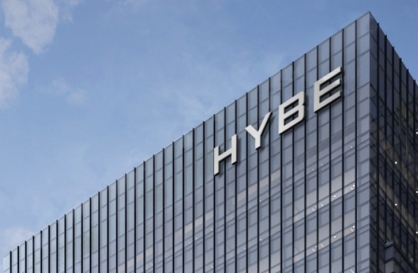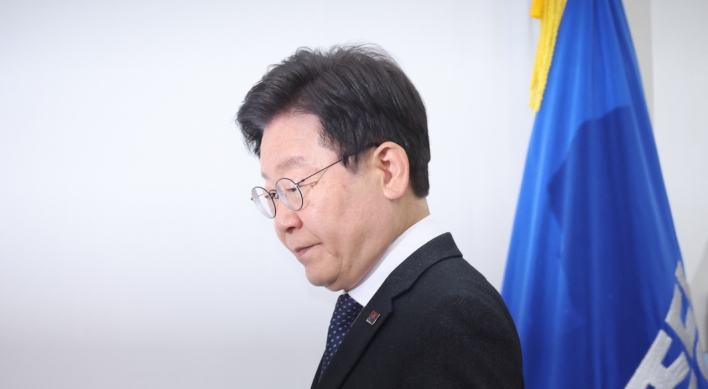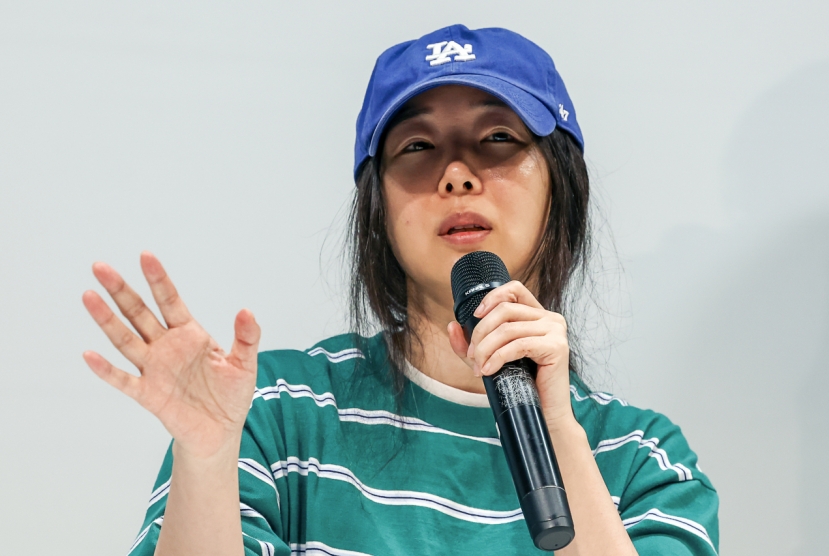As Korean society becomes culturally diversified, multiculturalism has emerged as a popular topic in the mass media.
Starting with 2007’s SBS TV drama “Golden Bride,” which featured a Vietnamese woman married to a Korean man, more TV dramas, movies and entertainment shows followed featuring different facets of multiculturalism in Korea.
Multiculturalism was a major theme in recent box-office hits such as “Wandeuki” (English title “Punch”) in 2011 and “Banga Banga” (“He’s on Duty”) in 2010, as well as a string of TV dramas and entertainment shows.
Starting with 2007’s SBS TV drama “Golden Bride,” which featured a Vietnamese woman married to a Korean man, more TV dramas, movies and entertainment shows followed featuring different facets of multiculturalism in Korea.
Multiculturalism was a major theme in recent box-office hits such as “Wandeuki” (English title “Punch”) in 2011 and “Banga Banga” (“He’s on Duty”) in 2010, as well as a string of TV dramas and entertainment shows.

“Wandeuki” depicts an 18-year-old boy’s growth from a teenager to a young adult through several life-changing incidents, including finding his Filipino mother.
“Banga Banga” offered a fresh look at foreign workers in Korea, casting a number of real-life foreign workers.
The multicultural factor also appeared in KBS TV drama “Ojakgyo Brothers,” which aired from 2011 to 2012 during primetime on weekends.
One of the character’s lives is changed forever when he finds out he has a 9-year-old son with his Filipino ex-girlfriend.
Some in academia see the emergence of multiculturalism on the screen as having started when Korean-American football player Hines Ward visited Korea in 2006.
“Hines Ward’s successful life story called public attention to minorities and discrimination toward them. It influenced people to become more flexible in accepting cultural diversity and open to multiculturalism,” wrote Jeong Eui-chul of the Department of Media Studies at Sangji University in his 2007 study on how multiculturalism is expressed in the Korean media.
Born to an African-American father and a Korean mother, Hines emerged as an example of a multicultural kid who overcame racial discrimination to become a football hero. His visit paved the way for a broader understanding of other cultures and immigrants. It also triggered productions of TV programs using multiculturalism as the main theme.
KBS’ “Global Talk Show” started to air in 2006 with the unique concept of featuring a panel of foreign women in Korea. They discussed cultural differences and fun episodes they experienced in Korea in fluent Korean. Thanks to its huge popularity, the show ran for a second season from January to May in 2010.
However, as more TV shows and movies look at multiculturalism, some have raised concerns that distorted representations are leaving people with a stereotyped and biased image.
“When we think of the image of multiculturalism, it’s associated with minorities in society. They are portrayed more often as underprivileged,” said culture critic Lee Moon-won.
“People are not moved by the poor anymore. And featuring disabled people is a sensitive issue. Multiculturalism is being used to portray extreme cases of an underprivileged class in TV programs,” Lee added.
In TV dramas and movies, foreign migrant workers, especially illegal female workers, are depicted as needing help to avoid being caught by the authorities, while marriage immigrants need constant outside help to adjust to the new culture.
Jeong of Sangji University noted that foreign migrant workers and marriage immigrants are expressed in “negative images presented in backward, filthy scenes” by Korean media.
Multiculturalism as a disguised form of cultural assimilation
Some also point out that multiculturalism depicted in the mass media doesn’t reflect the cultural diversity it entails.
“Although the broad theme would be multiculturalism, some programs expect foreigners to have fully assimilated into the Korean culture until their culture is respected by Koreans,” said culture critic Hwang Jin-mi during a news and talk show program on SBS CNBC in February this year.
TV dramas featuring marriage immigrants such as KBS’s “Across the Mountain, Namchon” develop their stories on how foreign spouses are adapting to the new environment and coping with cultural differences with their in-laws.
“TV programs fail to present the cultural diversity that foreigners bring to Korean society, but rather focus on cultural assimilation,” culture critic Lee said.
Lee further noted that Korean mass media’s portrayal of multiculturalism and the government’s multicultural policy looked alike in that they encouraged foreign immigrants to “become” Korean, rather than respecting cultural differences.
The term multiculturalism is also used to cover up for social problems and potential conflict.
The 2011 study “The Effect of Media Stereotyping of Immigrants on Attitudes towards Multiculturalism in Korea” by a group of communications professors at Hallym University, led by professor Cheong Yeon-goo, argued that the long-running KBS documentary “Love in Asia” covered social problems related to multiculturalism with touching human interest stories of immigrants and “homogenized” different groups of foreigners under the name of multiculturalism.
Culture critic Lee stressed that public broadcasters should create programs that would help prevent Koreans from suffering culture shock in the next five to 10 years.
“Multicultural kids living in rural areas will be grown-ups in five to 10 years and we will see them in cities, the military and everywhere,” said Lee.
The government predicts half of the population under 19 in rural areas will be multi-ethnic by 2020.
“Media should engage in forming a balanced view toward multiculturalism in the wake of nationalism in times of an economic downturn and dramatic shift in the Korean demographic picture in the near future.”
By Lee Woo-young (wylee@heraldcorp.com)





![[Herald Interview] 'Amid aging population, Korea to invite more young professionals from overseas'](http://res.heraldm.com/phpwas/restmb_idxmake.php?idx=644&simg=/content/image/2024/04/24/20240424050844_0.jpg&u=20240424200058)











![[KH Explains] Korean shipbuilding stocks rally: Real growth or bubble?](http://res.heraldm.com/phpwas/restmb_idxmake.php?idx=652&simg=/content/image/2024/04/25/20240425050656_0.jpg&u=)

